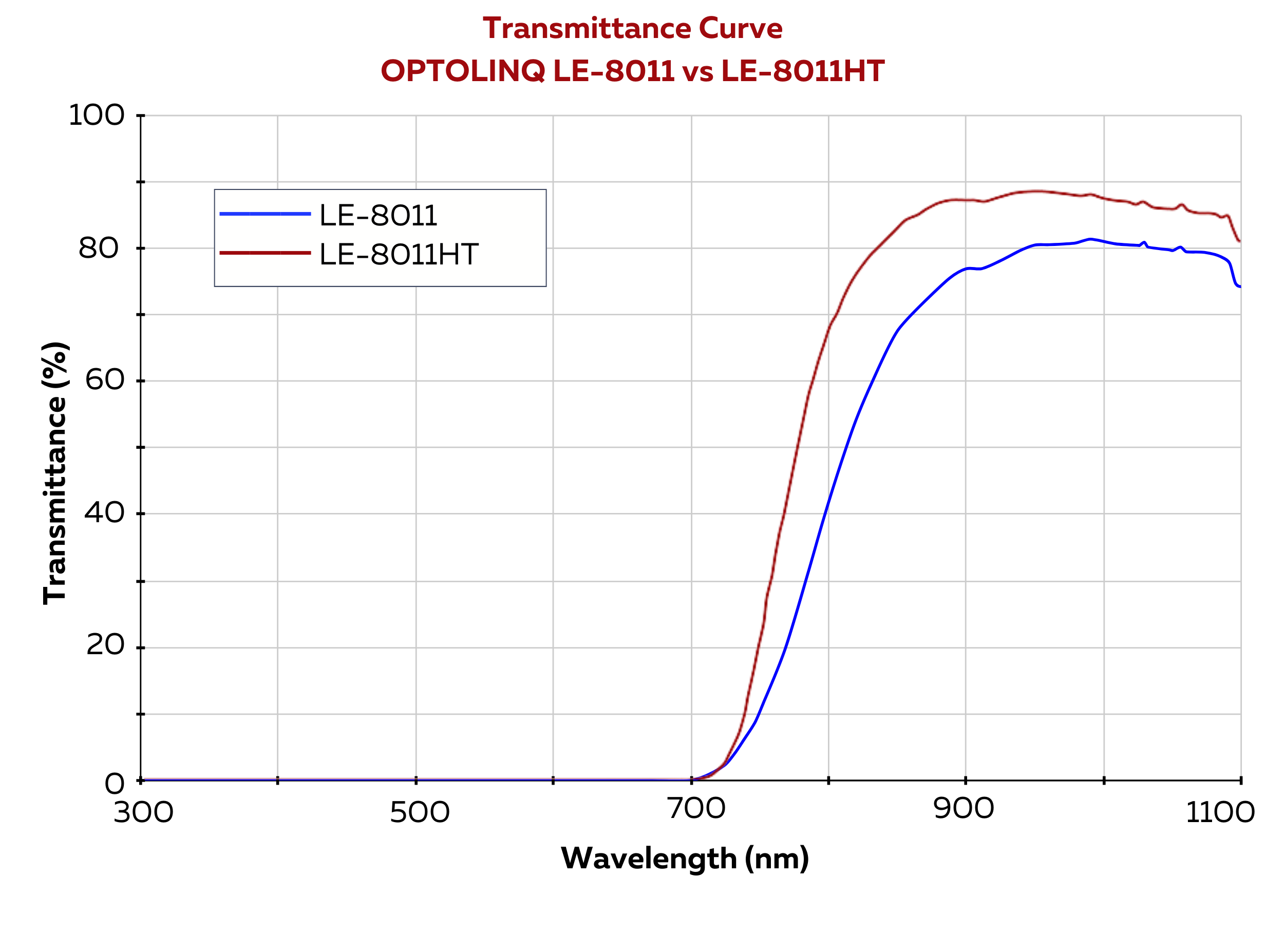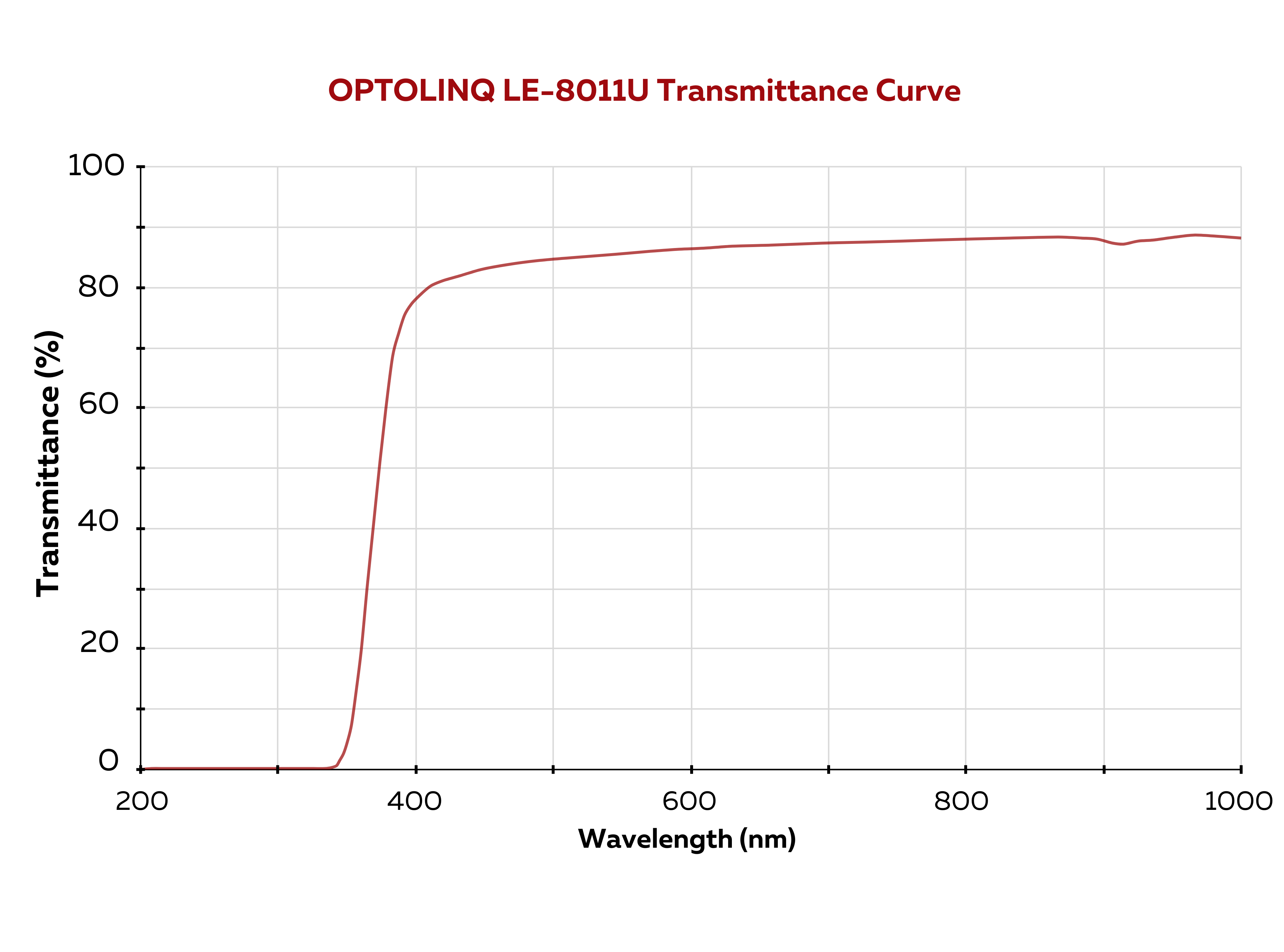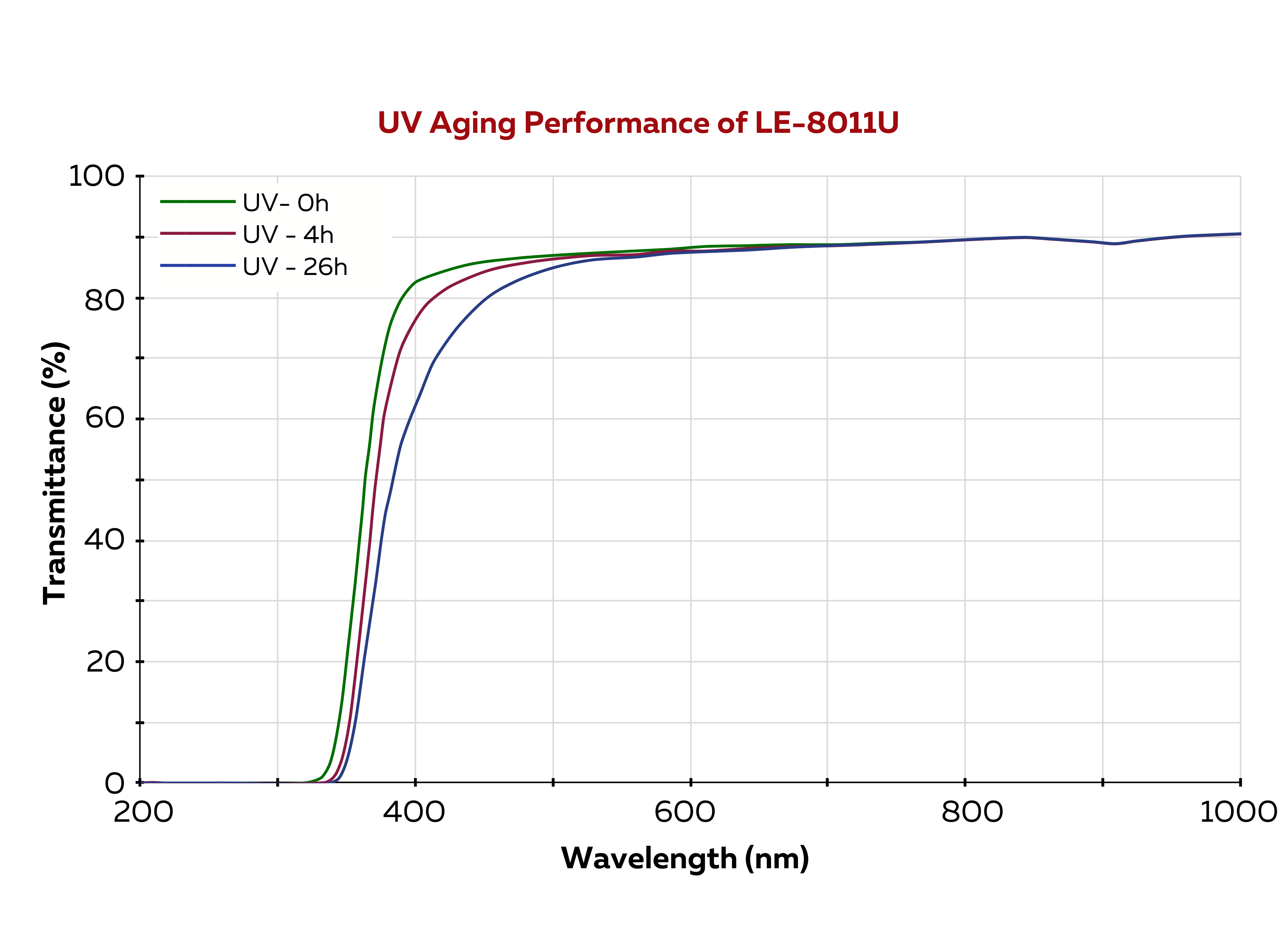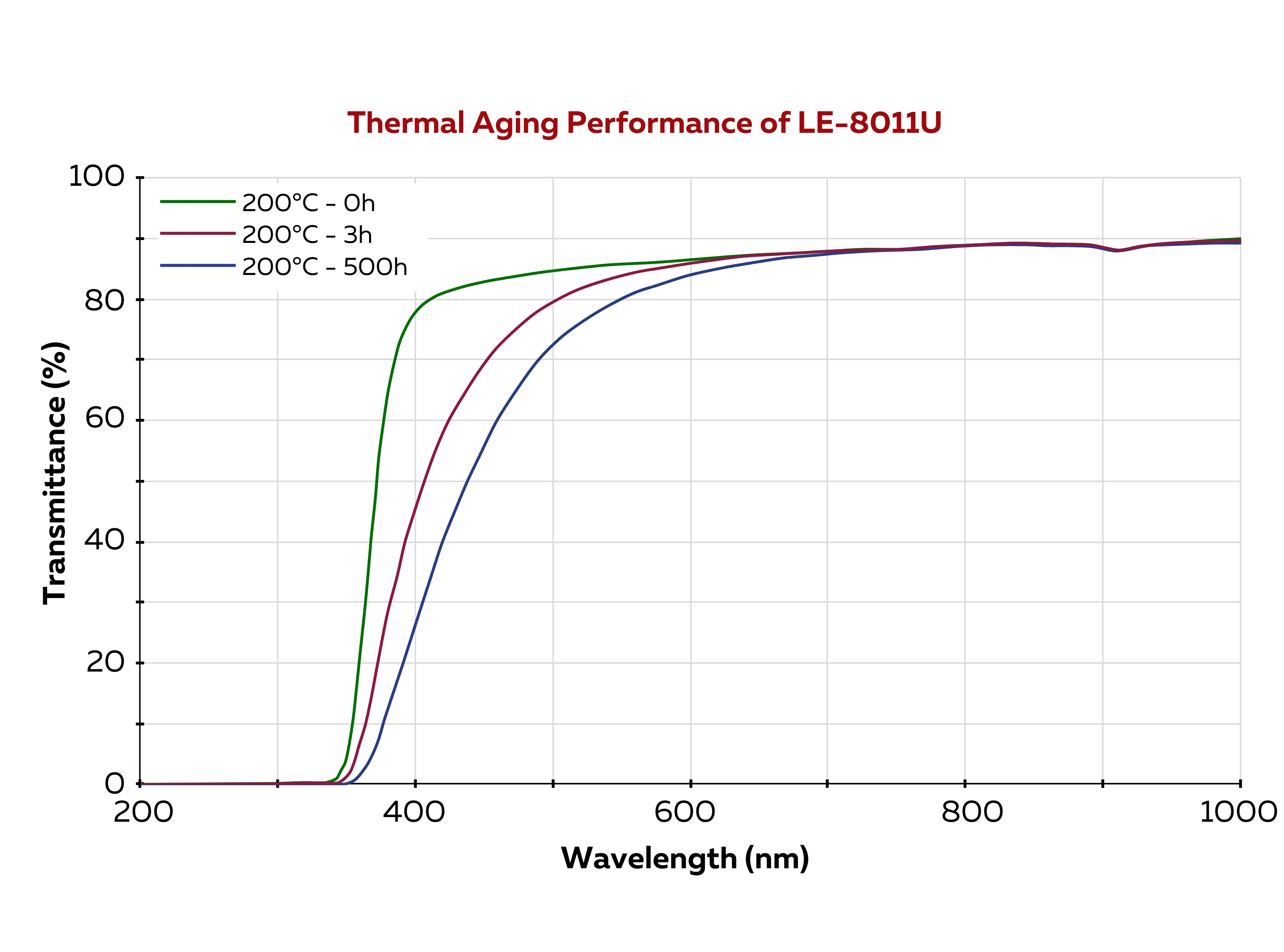OPTOLINQ LE-8011 | Two part epoxy resin
- Excellent thermal stability
- Excellent UV stability
- High light transmittance
Product Description
OPTOLINQ LE-8011 is an epoxy resin specifically designed for infrared device packaging applications. This resin exhibits superior thermal stability and excellent UV stability, ensuring that devices can withstand high temperatures and ultraviolet light exposure without degradation.
Upon curing, OPTOLINQ LE-8011 forms robust cross-linked networks, providing strong adhesion and maintaining airtight seals. These properties make LE-8011 an ideal high-performance solution for infrared device packaging.
Key Features
- Excellent thermal stability
- Excellent UV stability
- Excellent light transmission
- Excellent adhesion
- Good air tightness
Available versions
- LE-8011 Visible Light Blocking
- LE-8011U UV-resistant Optically Clear
- LE-8011HT Visible Light Blocking- Improved LE-8011
Technical Specifications
| General Properties | |||||||
| Mix Ratio Mix Ratio The amount of a constituent divided by the total amount of all other constituents in a mixture | 100:95 | ||||||
| Pot Life Pot Life Pot life is the amount of time it takes for the viscosity of a material to double (or quadruple for lower viscosity materials) in room temperature after a material is mixed. It is closely related to work life but it is not application dependent, less precise and more of a general indication of how fast a system is going to cure. | 7 hours | ||||||
| Refractive index Refractive index The refractive index determines how much the path of light is bent, or refracted, when entering a material. It is calculated by taking into account the velocity of light in vacuum compared to the velocity of light in the material. The refractive index calculation can be affected by the wavelength of light and the temperature of the material. Even though it is usually reported on standard wavelengths it is advised to check the TDS for the precise test parameters. | 1.51 | ||||||
| Specific Gravity Specific Gravity Specific gravity (SG) is the ratio of the density of a substance to the density of a reference substance; equivalently, it is the ratio of the mass of a substance to the mass of a reference substance for the same given volume. For liquids, the reference substance is almost always water (1), while for gases, it is air (1.18) at room temperature. Specific gravity is unitless. | 1.15 | ||||||
| |||||||
| Physical Properties | |||||||
| Viscosity Viscosity Viscosity is a measurement of a fluid’s resistance to flow. Viscosity is commonly measured in centiPoise (cP). One cP is defined as the viscosity of water and all other viscosities are derived from this base. MPa is another common unit with a 1:1 conversion to cP. A product like honey would have a much higher viscosity -around 10,000 cPs- compared to water. As a result, honey would flow much slower out of a tipped glass than water would. The viscosity of a material can be decreased with an increase in temperature in order to better suit an application | 400-800 mPa.s | ||||||
| Chemical Properties | |||||||
| Moisture absorption | 0.74 % | ||||||
| Mechanical Properties | |||||||
| |||||||
| Thermal Properties | |||||||
| |||||||
| |||||||
| Glass Transition Temperature (Tg) Glass Transition Temperature (Tg) The glass transition temperature for organic adhesives is a temperature region where the polymers change from glassy and brittle to soft and rubbery. Increasing the temperature further continues the softening process as the viscosity drops too. Temperatures between the glass transition temperature and below the decomposition point of the adhesive are the best region for bonding. The glass-transition temperature Tg of a material characterizes the range of temperatures over which this glass transition occurs. | 163-173 °C | ||||||
Additional Information
To meet higher application requirements, liquid encapsulation is expected to have (1) excellent thermal stability; (2) low transmittance decay. Our resin technology could help meet these challenges. With the resin improved in LE-8011, the pot life increased (~7 hours), and viscosity decreased (~400-800 cP). Meanwhile, LE-8011 is a Visible light-blocking encapsulation based on the optically clear version LE-8011U product platform, both products remain with superior anti-blue decay and thermal aging stability. Worth to be mentioned, the properties of both products remains within the same range, apart from their appearance in color and optical performance.




Processing Instructions
- Mix components A and B in a 100:95 weight ratio and stir uniformly. Ensure that the mixture is uniform and free from streaks or unevenness.
- Defoam the mixture under vacuum conditions for 5 minutes.
- Recommended curing condition: First cure at 130 °C for 1 hour, then post cure at 150 °C for 4 hours.
Curing conditions should be determined according to the specific needs of the package being encapsulated, the conditions mentioned are for reference only.
Storage and Handling
The uncured resin can be cleaned with acetone or a suitable cleaning agent. Water cannot be used as cleaning agent.
Store in a cold, dry, and clean environment between 10–30 °C with relative humidity below 70%. Keep away from exposure to direct sunlight. It is strictly forbidden to store in outdoor environments. At proper storage conditions, unopened Part A and Part B have a shelf life of 12 months.



